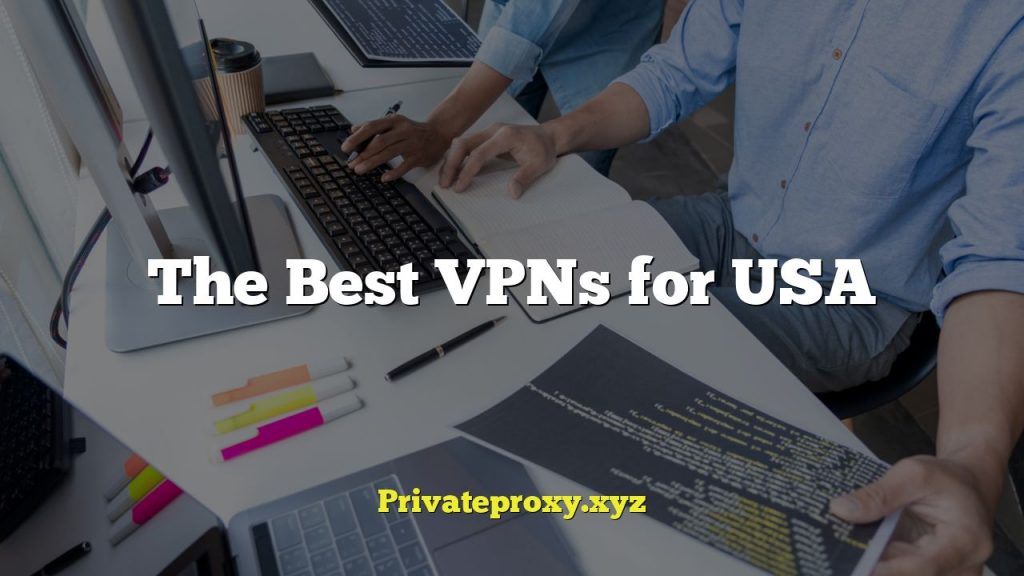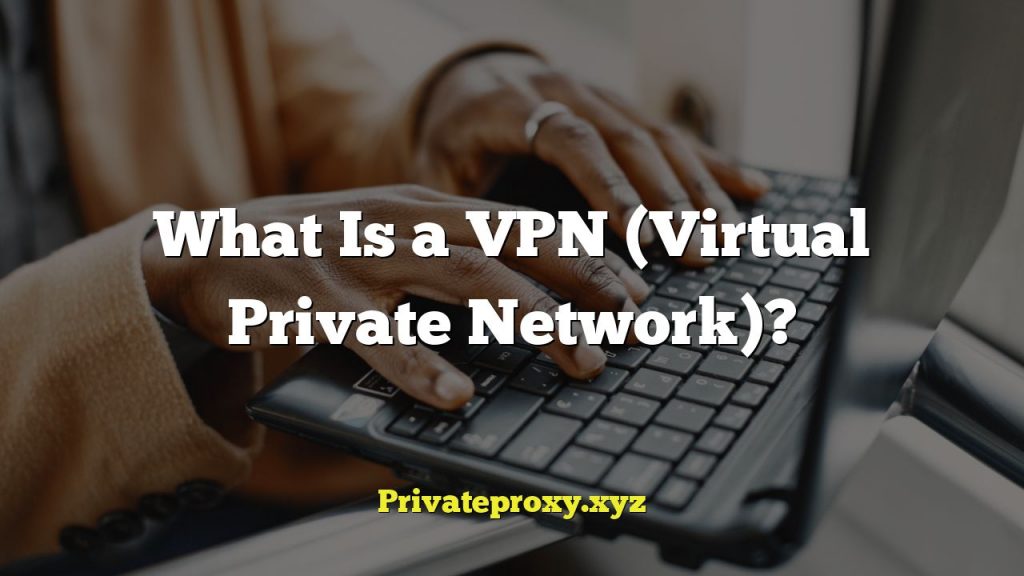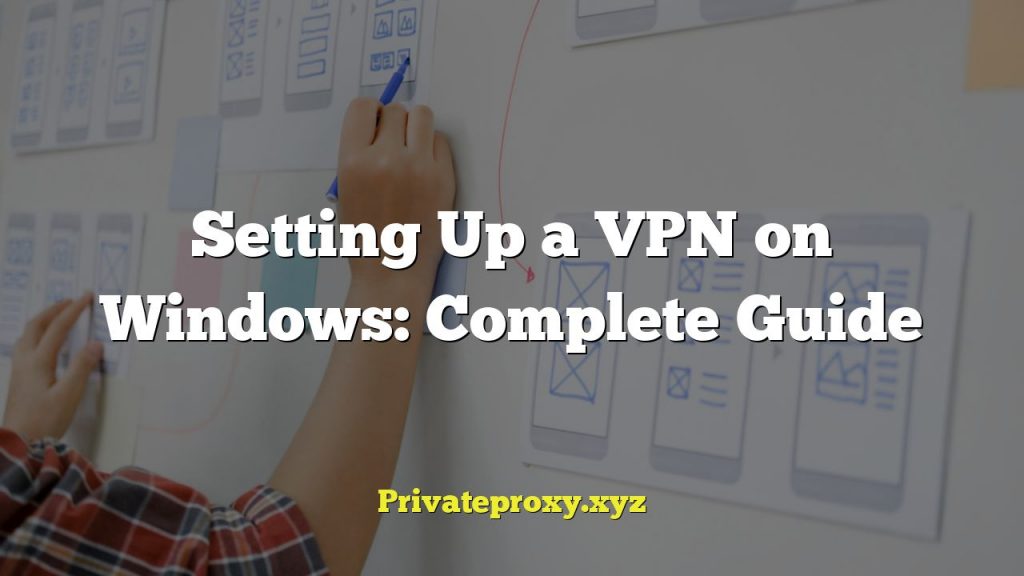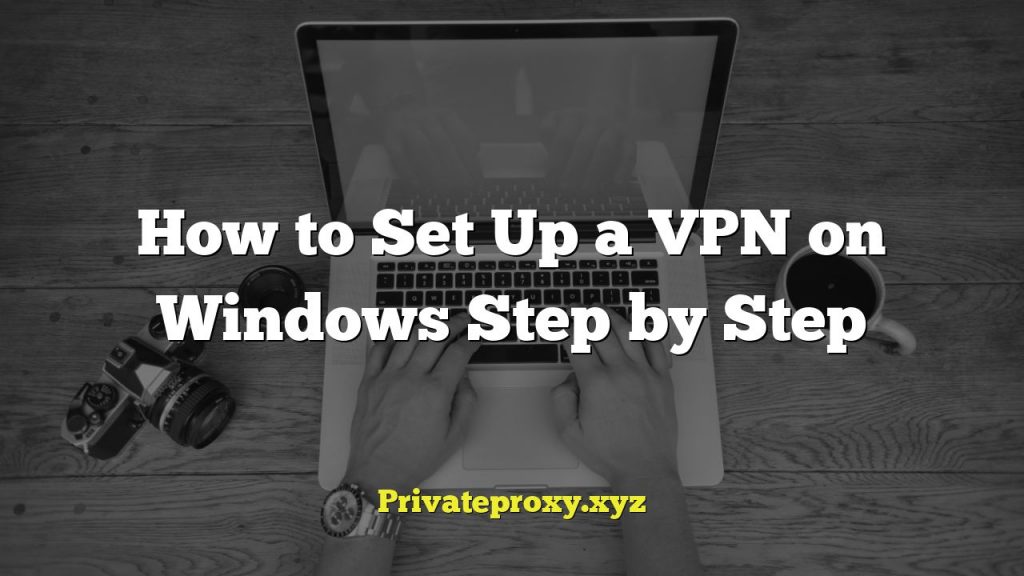
Setting Up a Business VPN for Small Companies
In today’s interconnected world, securing your business data and ensuring privacy is paramount, especially for small companies that might not have the resources of larger corporations. A Virtual Private Network (VPN) can be a cost-effective and powerful tool to achieve this, providing a secure and encrypted connection for your employees to access company resources, whether they are working remotely, traveling, or simply using public Wi-Fi networks. This article will guide you through the process of setting up a business VPN for your small company.
Understanding the Benefits of a Business VPN
Before diving into the technical aspects, it’s crucial to understand the various benefits a VPN offers to small businesses:
- Enhanced Security: A VPN encrypts all data transmitted between your employees’ devices and your company’s network, making it virtually unreadable to hackers and eavesdroppers. This is especially important when using public Wi-Fi, which is often unsecured.
- Remote Access: A VPN allows employees to securely access company files, applications, and resources from anywhere in the world, as if they were physically connected to the office network. This is essential for remote work and business travel.
- Data Privacy: A VPN masks your employees’ IP addresses, making it more difficult for third parties to track their online activity. This can protect sensitive business information and maintain privacy.
- Bypass Geolocation Restrictions: In some cases, a VPN can be used to bypass geographical restrictions on content or services, allowing employees to access resources that might be blocked in certain countries.
- Cost-Effectiveness: Compared to other security solutions, a VPN can be a relatively inexpensive way to protect your business data and ensure privacy.
Choosing the Right VPN Solution
There are several types of VPN solutions available, each with its own advantages and disadvantages. Here are the most common options:
- Hosted VPN: This is a cloud-based VPN service provided by a third-party vendor. The vendor handles all the technical aspects of setting up and maintaining the VPN infrastructure, making it a convenient option for small businesses with limited IT resources.
- Self-Hosted VPN: This involves setting up and managing your own VPN server using software like OpenVPN or WireGuard. This option offers more control and customization but requires technical expertise.
- VPN Router: This is a router that has built-in VPN capabilities. All devices connected to the router will automatically be protected by the VPN. This is a good option for securing an entire office network.
When choosing a VPN solution, consider the following factors:
- Number of Users: Ensure the VPN solution can support the number of employees who will be using it.
- Security Protocols: Look for a VPN that uses strong encryption protocols like OpenVPN or IKEv2/IPsec.
- Server Locations: Choose a VPN with server locations that are relevant to your business needs.
- Bandwidth and Speed: Ensure the VPN offers sufficient bandwidth and speed for your employees to work efficiently.
- Logging Policy: Review the VPN provider’s logging policy to understand what data they collect and how they use it. Ideally, choose a provider with a strict no-logs policy.
- Cost: Compare the pricing of different VPN solutions and choose one that fits your budget.
- Ease of Use: Select a VPN that is easy to set up and use, especially for employees who are not tech-savvy.
- Customer Support: Ensure the VPN provider offers reliable customer support in case you encounter any issues.
Setting Up a Hosted VPN
Setting up a hosted VPN is generally the easiest option for small businesses. Here’s a step-by-step guide:
- Choose a VPN Provider: Research and select a reputable VPN provider that meets your business needs.
- Sign Up for a Plan: Choose a plan that supports the number of users you need and fits your budget.
- Download and Install the VPN Client: Download the VPN client for your operating system (Windows, macOS, iOS, Android) from the VPN provider’s website.
- Configure the VPN Client: Follow the VPN provider’s instructions to configure the VPN client with your account credentials. This typically involves entering your username and password.
- Connect to a VPN Server: Choose a VPN server location and connect to it. The VPN client will establish a secure connection to the VPN server.
- Test the Connection: Verify that the VPN is working correctly by checking your IP address. It should be different from your actual IP address.
- Deploy to Employees: Provide your employees with instructions on how to download, install, and configure the VPN client.
- Enforce VPN Usage: Consider implementing policies to ensure that employees use the VPN when accessing company resources, especially when using public Wi-Fi.
Setting Up a Self-Hosted VPN
Setting up a self-hosted VPN requires more technical expertise but offers greater control over your VPN infrastructure. Here’s a general overview of the process using OpenVPN as an example:
- Choose a Server: Select a server to host your VPN. This could be a physical server or a virtual machine hosted in the cloud. Ensure the server has sufficient resources (CPU, RAM, bandwidth) to support your users.
- Install OpenVPN: Install the OpenVPN software on your server. The installation process will vary depending on your operating system.
- Configure OpenVPN: Configure OpenVPN by creating configuration files that define the VPN settings, such as the encryption protocol, port number, and client authentication method.
- Generate Certificates and Keys: Generate certificates and keys for the server and each client. These are used to authenticate the connection between the client and the server.
- Create Client Configuration Files: Create client configuration files for each user, including the server address, port number, and client certificate and key.
- Distribute Client Configuration Files: Distribute the client configuration files to your employees.
- Install OpenVPN Client: Install the OpenVPN client on your employees’ devices.
- Import Client Configuration Files: Import the client configuration files into the OpenVPN client.
- Connect to the VPN: Connect to the VPN using the OpenVPN client.
- Test the Connection: Verify that the VPN is working correctly.
- Secure the Server: Implement security measures to protect your VPN server, such as a firewall and intrusion detection system.
Setting Up a VPN Router
A VPN router is a router with built-in VPN capabilities. This allows you to protect all devices connected to the router with a VPN. Here’s how to set it up:
- Choose a VPN Router: Select a VPN router that supports the VPN protocols you need (e.g., OpenVPN, WireGuard) and is compatible with your existing network infrastructure.
- Configure the Router: Access the router’s configuration interface through a web browser.
- Enter VPN Credentials: Enter your VPN provider’s credentials (username, password, server address) in the router’s VPN settings.
- Connect to the VPN: Connect to the VPN through the router’s configuration interface.
- Test the Connection: Verify that all devices connected to the router are protected by the VPN by checking their IP addresses.
- Secure the Router: Update the router’s firmware and change the default password to protect it from unauthorized access.
Best Practices for Business VPN Security
To ensure the security of your business VPN, follow these best practices:
- Use Strong Passwords: Encourage employees to use strong, unique passwords for their VPN accounts.
- Enable Multi-Factor Authentication (MFA): Implement MFA for VPN access to add an extra layer of security.
- Keep Software Up-to-Date: Regularly update the VPN client software and the server operating system to patch security vulnerabilities.
- Monitor VPN Logs: Monitor VPN logs for suspicious activity, such as unusual login attempts or large data transfers.
- Educate Employees: Educate employees about VPN security best practices, such as avoiding phishing scams and using strong passwords.
- Implement a Firewall: Use a firewall to protect your company network from unauthorized access.
- Restrict Access: Limit access to sensitive company resources to only those employees who need it.
- Regularly Audit Your VPN: Conduct regular security audits of your VPN to identify and address any vulnerabilities.
Conclusion
Setting up a business VPN can be a significant investment in the security and privacy of your small company. By carefully choosing the right VPN solution, following the setup instructions, and implementing best practices for security, you can protect your business data, enable secure remote access, and maintain employee privacy.



